In this article, we’ll take you on a feathery adventure as we explore 18 fascinating birds that start with the letter M. These birds are some of the most exquisite and exotic species of birds found around the world. From the charming macaroni penguin to the graceful mute swan, we will divulge insightful and interesting facts about these avian wonders. These birds will captivate you with their beauty and leave you inspired to learn more about our natural world.
Here are the main points:
- Get to know 18 bird species that start with the letter M
- Explore the unique and diverse characteristics of these birds
- Learn interesting facts about their native habitats and behaviors
- Discover new and fascinating species of birds to admire and appreciate
- Expand your knowledge of the natural world around us
List Of Birds That Start With M
Macaroni Penguin
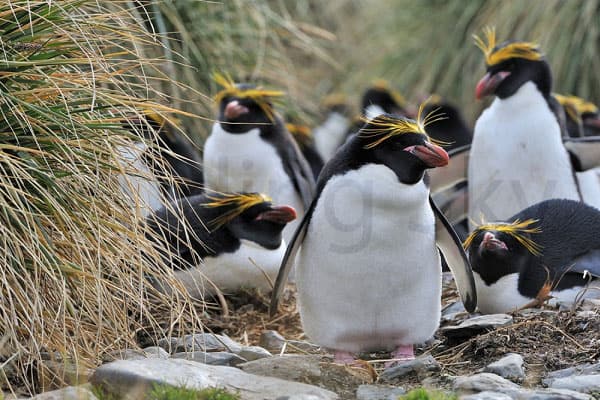
If you’re looking for a penguin that stands out from the crowd, you can’t go wrong with the macaroni penguin. This unique bird has a distinctive yellow crest on its head that gives it a fun and quirky appearance.
Found in the sub-Antarctic regions of the world, the macaroni penguin is a member of the crested penguin family and is known for forming large breeding colonies. They can be found in places like South Georgia, the Falkland Islands, and the South Sandwich Islands.
One interesting fact about this species is that despite their numerous breeding colonies, all macaroni penguins mate with only one partner each year. They can dive up to 100 meters (330 feet) to forage for krill and other small fish.
| Common Name | Macaroni Penguin |
|---|---|
| Scientific Name | Eudyptes chrysolophus |
| Population | Over a million breeding pairs |
| Habitat | Sub-Antarctic islands |
| Diet | Krill, small fish |
| Size | 70 to 76 cm (28 to 30 in) |
| Weight | 4.5 to 6.3 kg (9.9 to 13.9 lb) |
| Conservation Status | Least Concern |
Despite their large population, the macaroni penguin is still susceptible to threats such as climate change and overfishing. Conservation efforts, including protected areas and monitoring of population numbers, are crucial to ensuring the survival of this unique bird species.
Don’t underestimate the macaroni penguin – this quirky bird is definitely one to keep an eye on.
Mountain Bluebird
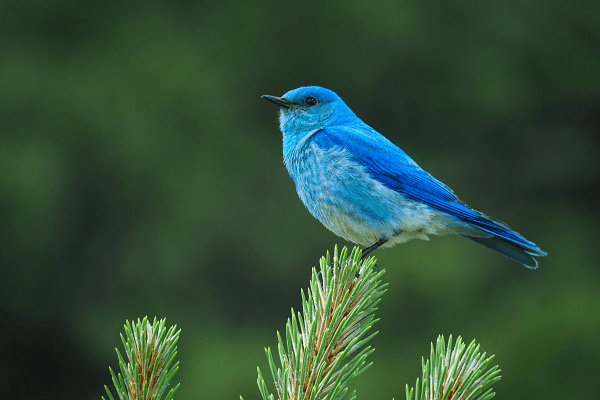
If you’re ever lucky enough to spot a mountain bluebird, you’re in for a real treat. These stunning songbirds are known for their vibrant blue plumage, which makes them stand out against their surroundings.
Mountain bluebirds can be found in open habitats across North America, from the mountains of the west to the prairies of the east. They’re a delight to birdwatchers with their melodious songs and graceful flight, and they’re always a welcome sight in any landscape.
Physical Characteristics
The mountain bluebird is a small bird, measuring about 6 inches in length. The male has bright blue feathers on its head, back, and wings, with a rusty red throat and breast. The female has a less vibrant blue plumage and a more muted rusty-orange throat and breast.
Both males and females have a white belly and undertail coverts, and their eyes are bright white. They have a short, straight bill and a relatively long tail.
Habitat and Distribution
Mountain bluebirds are found in a variety of open habitats, including grasslands, sagebrush, and alpine meadows. They can be found across western and central North America, from Alaska and Canada down to Mexico.
During the breeding season, they typically nest in tree cavities, but they’ll also use nest boxes, especially in areas where natural nest sites are scarce.
Diet and Behavior
Mountain bluebirds primarily feed on insects, especially during the breeding season. They’ll also eat berries and other small fruits, especially in the fall and winter.
They’re often seen perched on a fence post or other prominent perch, where they can keep an eye out for insects and other prey. They’re also known for their graceful flight, which is characterized by deep, slow wingbeats and occasional glides.
Conservation Status
Mountain bluebirds are currently considered to be a species of least concern by the International Union for Conservation of Nature (IUCN). However, like many birds, they face threats from habitat loss and fragmentation, pesticides, and climate change.
Fortunately, there are many organizations working to protect the habitats that mountain bluebirds depend on. By supporting conservation efforts, we can help ensure that these beautiful birds continue to thrive for generations to come.
Madagascar Fish Eagle
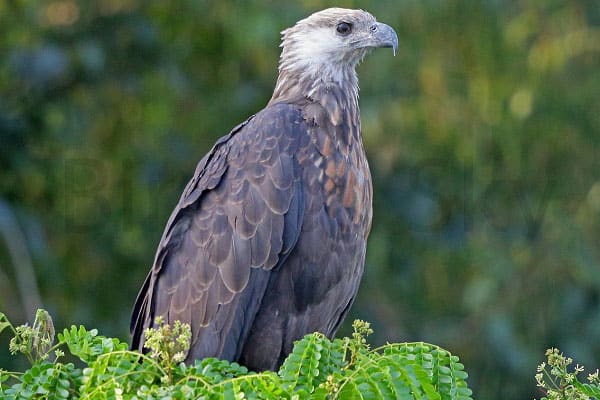
As we continue our exploration of birds that start with M, we come across the remarkable Madagascar fish eagle. Endemic to the island of Madagascar, this majestic bird is a rare and critically endangered species that deserves our attention.
The Madagascar fish eagle is known for its striking appearance and powerful hunting skills. With a wingspan of up to 7 feet, it is a formidable predator that preys on fish and small mammals. Its body is covered in dark brown feathers, with a white head and tail, and bright yellow eyes.
Threats to Madagascar Fish Eagle
Unfortunately, this magnificent bird is facing numerous threats to its survival. Habitat loss and degradation due to deforestation, human encroachment, and mining activities are some of the primary reasons for its decline. In addition, illegal hunting, egg collection, and disturbance of nesting sites further threaten its future.
Conservation efforts are underway to protect this species, including the establishment of protected areas and captive breeding programs. However, there is still much work to be done to ensure the long-term survival of the Madagascar fish eagle.
“The Madagascar fish eagle is a symbol of the unique biodiversity found on this island nation,” says our bird expert. “We must do everything we can to protect it and its habitat.”
Madeira Firecrest
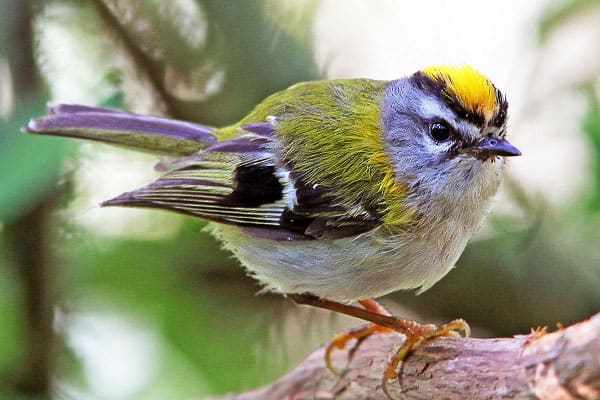
Are you ready to meet the dazzling Madeira Firecrest? This brightly colored little bird is native to Madeira and can often be found flitting around the island’s lush forests. Its fiery orange plumage and sweet melodic song make it a fan favorite among birdwatchers and nature enthusiasts.
This small bird may be challenging to spot, but its vibrant colors make it worth the effort. The Madeira Firecrest is just 10 centimeters long, making it one of the smallest birds found on the island. Despite its size, it has a loud and distinctive song that can be heard throughout the forests.
If you’re lucky enough to spot one of these feathered wonders, you may notice its active and energetic movements. Madeira Firecrests are known for their lively behavior and can be seen darting between branches and leaves in search of insects and spiders to eat.
The Madeira Firecrest’s Habitat
The Madeira Firecrest is found exclusively on the island of Madeira. It thrives in the island’s lush laurel and heather forests, where it builds its nests in the branches of trees.
Due to the bird’s limited range and the loss of its natural habitat, the Madeira Firecrest is considered vulnerable to extinction. Conserving this unique and beautiful bird is crucial to the biodiversity of Madeira.
Facts About the Madeira Firecrest
| Fact | Description |
|---|---|
| Scientific Name | Regulus madeirensis |
| Size | 10 centimeters long |
| Appearance | Bright orange plumage with dark markings, a distinctive crest on the head, and a white eye stripe |
| Song | Loud and melodious |
| Habitat | Laurel and heather forests of Madeira |
| Conservation Status | Vulnerable |
There’s so much to love about the Madeira Firecrest. From its colorful plumage to its lively behavior, this little bird is sure to make an impression. If you have the chance to visit Madeira, keep your eyes and ears open for this charming avian wonder.
Magellanic Penguin
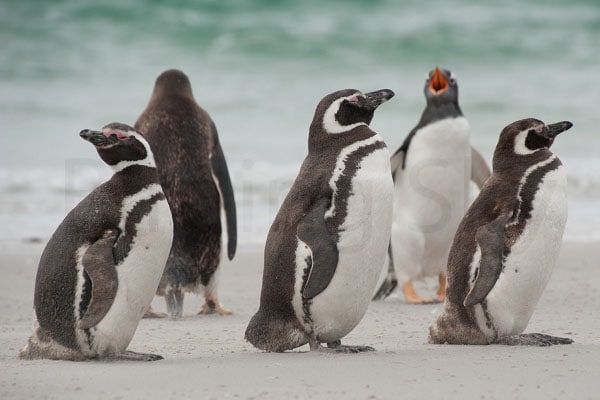
Here we dive into the fascinating world of Magellanic penguins, a medium-sized penguin species native to the coasts of South America. These adorable birds are known for their charismatic personalities, unique breeding habits, and comical waddle.
Magellanic penguins are named after the region they inhabit, the Strait of Magellan, located at the southern tip of South America. They are one of the six penguin species found in South America and are the only ones that breed on the continent’s Atlantic coast.
These fascinating creatures are monogamous, which means they mate for life and return to the same breeding site each year to mate. They are also burrow-nesters, making their nests in the ground or in rocky crevices, and often produce multiple clutches of eggs during a breeding season.
| Physical Characteristics | Breeding Habits | Diet |
|---|---|---|
| Distinctive black and white stripes on their chest, with a black beak and feet. A band of pinkish-red feathers above their eyes. Medium-sized, standing about 2ft tall and weighing around 10lbs. | Monogamous breeding for life. Burrow-nesters, attaching to one partner every year. Produce multiple clutches of eggs each season. | Feed on anchovies, sardines, and squid, diving into the water to hunt their prey. Capable of diving to depths of up to 60 meters for up to 2 minutes, thanks to a specialized respiratory and circulatory system. |
Magellanic Penguins are a delight to watch, both on land and in the water. Their comical waddle and playful demeanor have captured the hearts of many. They are a significant tourist attraction for many South American countries and have even been featured in popular films and documentaries such as “Happy Feet” and “March of the Penguins.”
Stay tuned to discover more exotic birds that start with the letter M!
Malabar Trogon
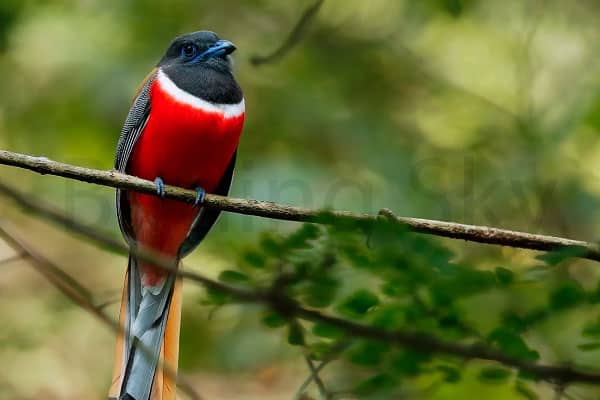
If you’re a bird enthusiast, the Malabar trogon is a must-see species. Found in the rainforests of the Western Ghats in India, this bird is renowned for its vibrant plumage and distinctive call. The trogon sports a bright red belly, a green back, and a blue and yellow tail, making it a striking sight for lucky nature lovers.
The Malabar trogon’s call is a loud, descending, whistling sound that is often heard in the forest canopy. This bird is a symbol of the incredible biodiversity found in the region, and is highly valued by the locals as a spiritual creature.
Mourning Dove
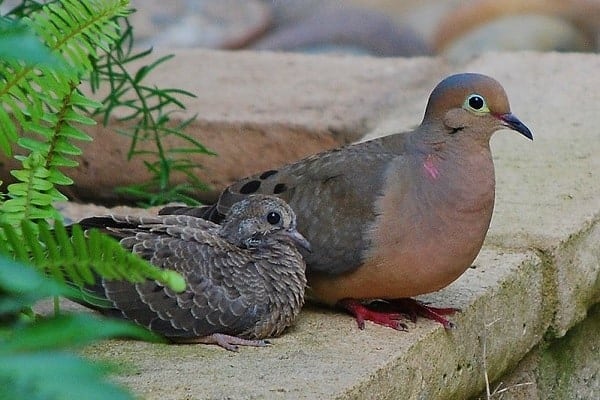
Our next bird on the list is the mourning dove, a common sight throughout North and Central America. This species is known for its soft, mournful cooing sound and can often be seen in urban and suburban areas.
The mourning dove is a medium-sized bird with a plump body, small head, and pointed tail. Its plumage is mostly gray-brown with black spots on its wings. The male and female are similar in appearance, with the male having slightly brighter coloring on its neck and breast.
These doves are ground feeders, and their diet consists mostly of seeds. They are also known to eat berries and insects on occasion. Mourning doves mate for life and can lay up to six clutches of two eggs each per year. They are also known for their swift flight and distinctive whistling sound as they take off.
Overall, the mourning dove is a peaceful and familiar species that adds a gentle presence to our surroundings.
Masked Crimson Tanager
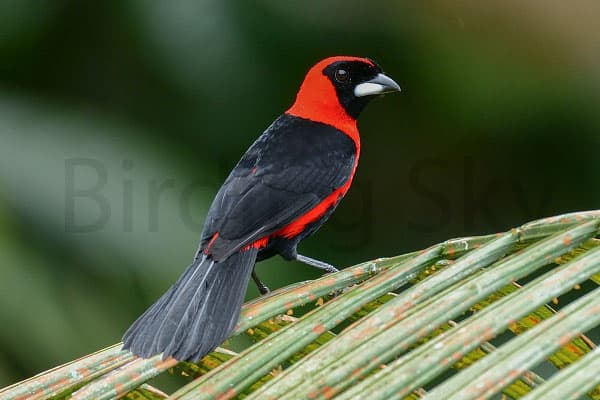
The masked crimson tanager is a stunning tropical birds that start with M that can be found in the lush forests of South America. With its notable red and black feathers, this bird is a remarkable sight to behold. We’ve compiled some fascinating facts about this captivating species that will undoubtedly pique your interest.
Appearance and Behavior
| Characteristic | Description |
|---|---|
| Plumage | The male masked crimson tanager has a black head, upper body, and wings with a beautiful crimson-red breast and belly, while the female is less vibrant with olive-green feathers on its back and wings. |
| Habitat | The masked crimson tanager inhabits the canopy layer of tropical rainforests, from Venezuela to northern Peru. |
| Diet | This tanager feeds on fruits, seeds, and insects. |
| Behavior | The masked crimson tanager is mostly active during the day, and it is known for its vocalizations, which are often loud. |
Conservation Status
Despite being a popular sight for bird enthusiasts, the masked crimson tanager faces various threats to its survival. Deforestation, habitat loss, and fragmentation are some of the primary challenges faced by this species. The International Union for Conservation of Nature (IUCN) has classified this bird as a species of “least concern,” but its population is nevertheless declining, and it needs better protection.
Masked Flowerpiercer
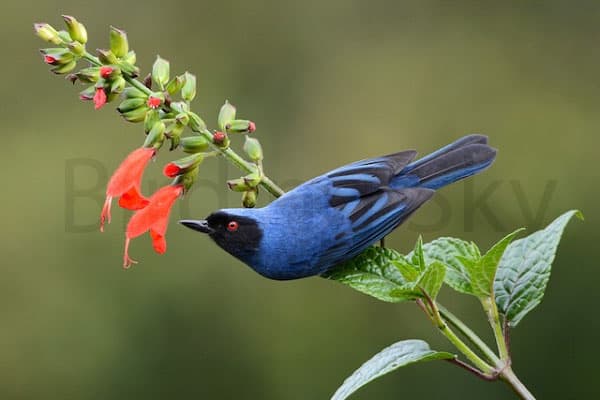
Have you ever heard of the masked flowerpiercer? This little passerine bird is found in the Andean regions of South America and is known for its unique feeding habits. Using its specialized bill, the masked flowerpiercer extracts nectar from flowers. It’s a fascinating sight to watch this bird pierce the base of the flower to access the sweet nectar inside.
The masked flowerpiercer is typically found near forest clearings and edges. They also consume insects and spiders to supplement their diet.
Despite their small size, these birds play an essential role in pollination and seed dispersal in their habitat.
Next time you’re exploring the Andean regions of South America, keep an eye out for the masked flowerpiercer and witness this unique and captivating bird in action.
Masked Trogon
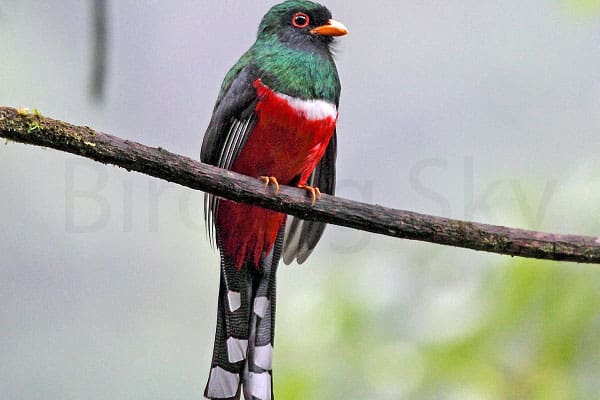
The masked trogon is truly a sight to behold. This stunning birds species that start with M is found in the rainforests of Central and South America, where it captivates birdwatchers with its vibrant plumage and elusive nature. If you’re lucky enough to spot a masked trogon, you’ll be treated to a dazzling display of colors.
One of the unique features of this trogon is its distinctive mask-like markings on its face, which give it its name. The male masked trogon has a bright red eye ring and a blue-gray head, while the female has a brown head and a white throat. Both sexes have a striking red breast and belly, and a contrasting yellow bill and feet.
The masked trogon is often found in the canopy of the rainforest, where it feeds on a variety of insects, spiders, and small fruits. Its elusive nature makes it a challenging bird to spot, but its distinctive call is a good indicator of its presence.
Despite being a small bird, the masked trogon plays an important role in its ecosystem. It helps to distribute seeds of the fruits it eats, and is a vital food source for many larger predators, such as hawks and eagles.
If you’re planning a trip to the rainforests of Central or South America, be sure to keep an eye out for the beautiful masked trogon. It’s a true highlight of any birdwatching experience.
Merlin
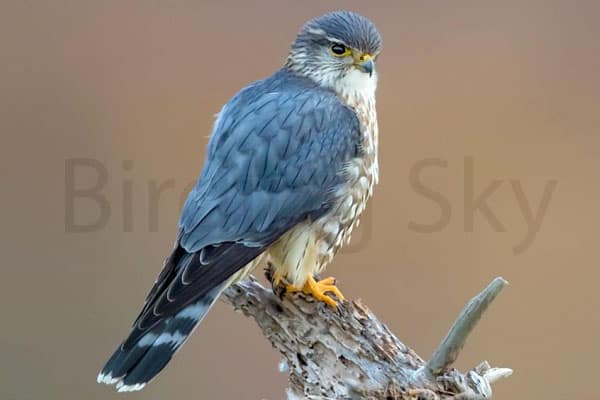
The merlin is a fascinating bird of prey that belongs to the falcon family. This small, agile falcon species is found in various habitats across North America, including open grasslands, tundra, and forests.
With its swift, powerful flight and predatory prowess, the merlin is an impressive sight to behold. These birds are known for their skillful hunting abilities, preying on small birds and other prey items along with using their speed to catch their prey in mid-flight.
The merlin’s breeding season typically occurs in the spring and summer months when they construct their nests in hollow trees and other protected areas. These birds are monogamous and tend to lay anywhere between 2-6 eggs. Though their populations are generally stable, some populations in certain areas are experiencing decline due to habitat loss and fragmentation.
Whether you’re a birdwatcher or simply appreciate these fascinating creatures, the merlin is a must-see bird in North America.
Mallard Duck
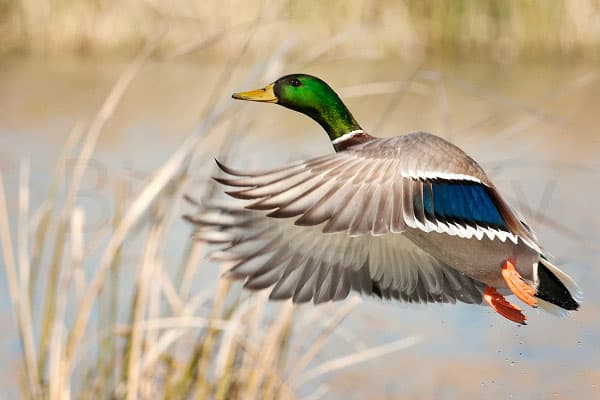
We’re all familiar with the mallard duck, the distinctly recognizable birds that start with M and found in many water bodies across North America. The males stand out with their bright green heads and yellow bills, while females have mottled brown feathers and an orange and brown bill.
Mallards are highly adaptable and can thrive in a variety of habitats, from parks and ponds to marshes and estuaries. They are also a popular game bird and are hunted for both sport and food.
One interesting fact about mallards is that they are known to practice “nest dumping.” This means that females may lay eggs in the nests of other females, sometimes even in different species’ nests. This behavior can be beneficial for increasing the chances of survival for the offspring.
Mallards are also known for their distinctive quacking sound, which is heard frequently around bodies of water. They are a common sight and sound in urban and suburban areas, and their adaptability has helped them thrive in a changing environment.
Overall, the mallard duck is a fascinating and adaptable species that is a true symbol of waterfowl in North America.
FAQ’s About Birds That Start with M
Q1: What is a common bird that starts with “M”?
A: The common bird that starts with “M” is the Mallard, a type of duck.
Q2: Are there any migratory birds that start with “M”?
A: Yes, the Monarch butterfly is a well-known migratory bird that starts with “M.”
Q3: Can you name a majestic bird that starts with “M”?
A: The majestic bird that starts with “M” is the Marabou Stork, known for its impressive size and appearance.
Q4: Which bird with an “M” in its name is known for its melodious singing?
A: The Mockingbird is famous for its melodious and varied singing.
Q5: Is there a bird that starts with “M” and is native to Australia?
A: Yes, Major Mitchell’s Cockatoo, a colorful parrot, is native to Australia and starts with “M.”
